
Exciting new series on “Voice, Body and Movement for Lawyers – How to connect with the jury and find Justice Through Dramatic Technique!”
Click here to find out more
“Movement psychology” is a branch of psychology that emerged in the early twentieth century with the research of the Swiss psychiatrist Carl Jung. The work was further developed by Rudolph Laban, the architect of European Contemporary dance, and completed by a Swiss dancer and actor named Yat Malmgren in the middle of the twentieth century.
Yat recognized that this would be a powerful tool for actors and went on to complete Laban’s theory. He extended Laban’s ideas by creating a psychological typology which brings together Laban and Stanislavsky. Inner motivation and outer expression are linked together leading to the detailed and accurate construction of character.
Yat taught this work to scores of acting students at the Drama Center in London. His students included Anthony Hopkins, Sean Connery, and Colin Firth to name a few. How is this work useful for lawyers? First and foremost, I believe that this work is enormously useful for storytellers, which is a crucial skill for lawyers when it comes to telling their client’s story to a jury. Very simply, the lawyer must tell their client’s story from the perspective of many different people (i.e., witnesses), none of whom are alike.
Practically speaking, this presentation could help litigation attorneys when it comes to cross-examining witnesses by helping them to identify a witness’s inner attitudes and thus what behavior would be most beneficial to adopt when it comes to questioning that witness in order to elicit favorable testimony.
It can also be enormously helpful during jury selection as you will come to find out. This work is taught to law enforcement officials to aid in interrogating suspects and constructing profiles of potential suspects when leads are scarce. It’s called, “Movement Pattern Analysis.” Thus, a collateral benefit is to put attorneys on a level playing field with law enforcement.
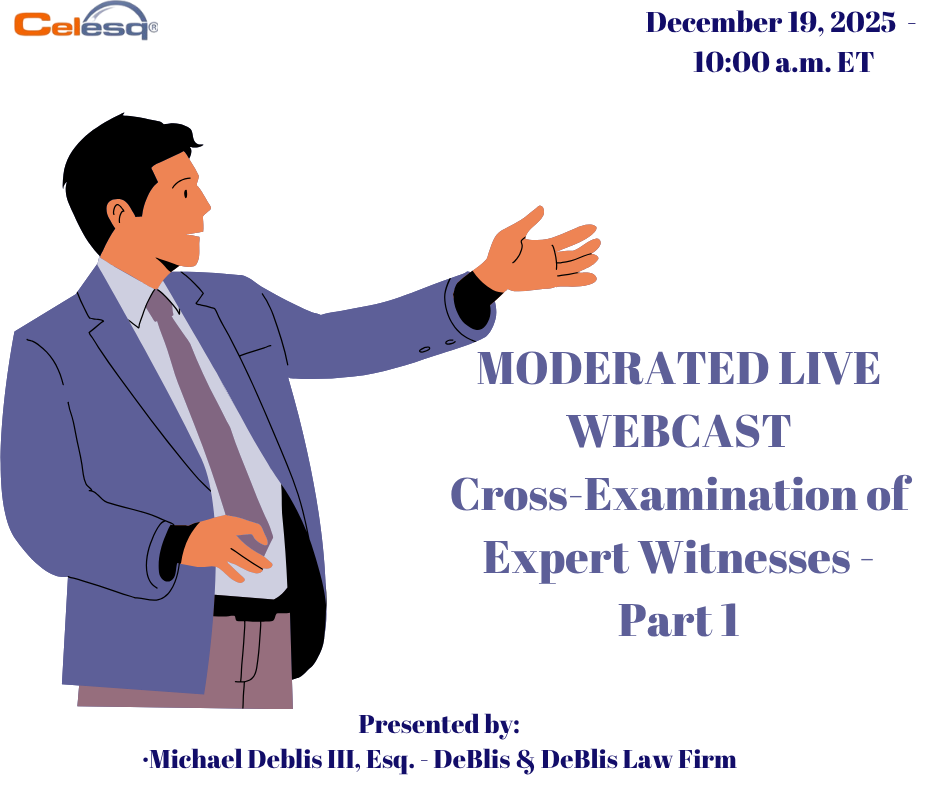
MODERATED-Part 1 of 2 - In this presentation, I will discuss strategies for cross-examining expert w...
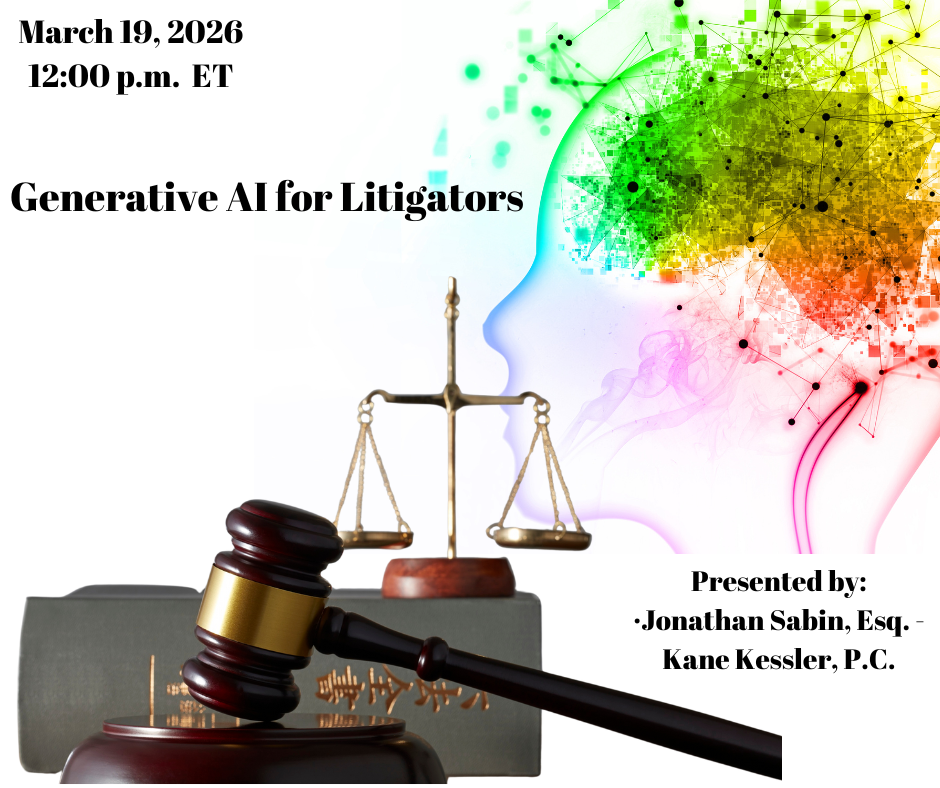
Explore the transformative potential of generative AI in modern litigation. “Generative AI for...

This Continuing Legal Education presentation covers electronic discovery and the related ethical dut...
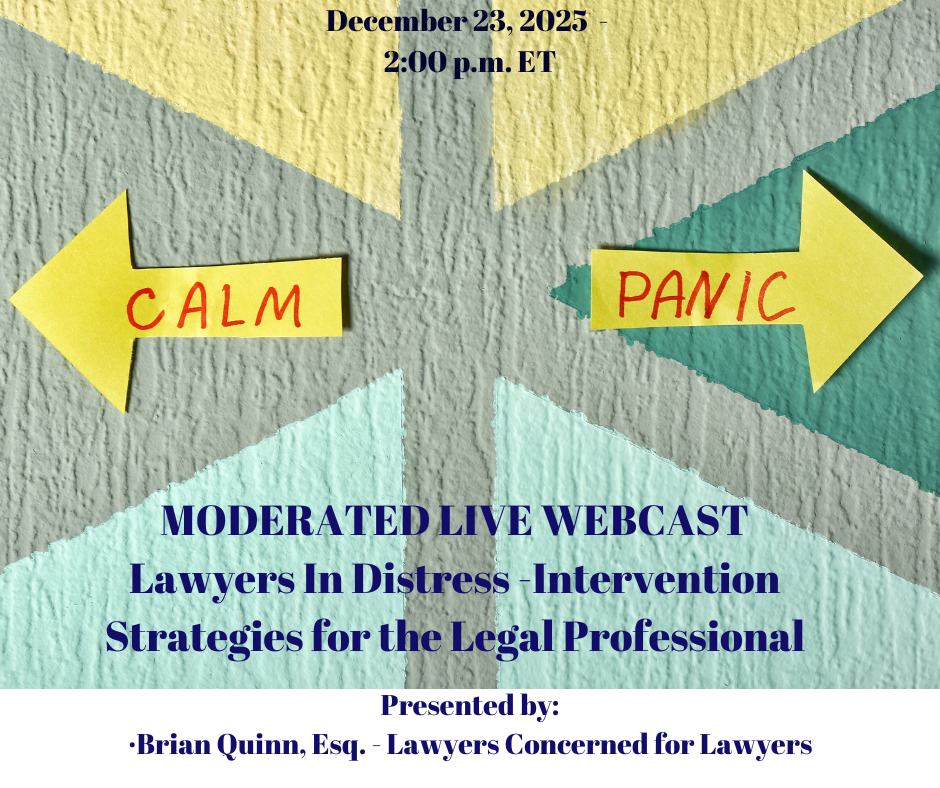
MODERATED- I’m ok. I can work this out for myself. I’m not like a “real” ...

“Maybe I drink more than I should, but it isn’t affecting my life-I’m ‘High-...

MODERATED-This CLE will cover the critical ethics issues involving multijurisdictional practice and ...
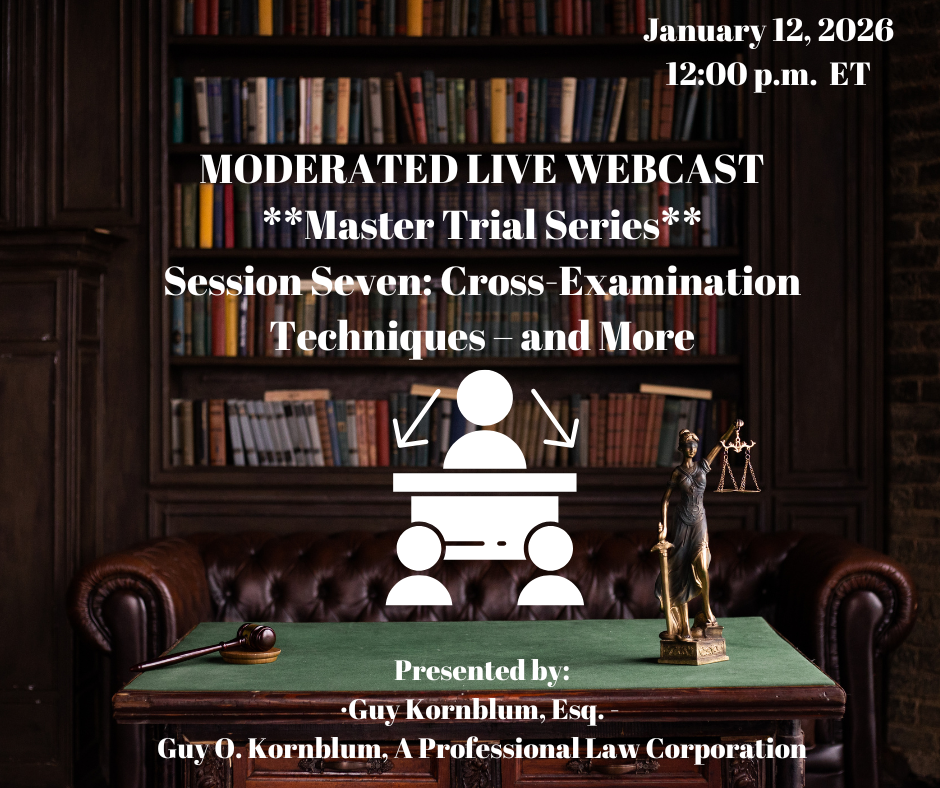
MODERATED-Session 7 of 10 - Mr. Kornblum, a highly experienced trial and litigation lawyer for over ...
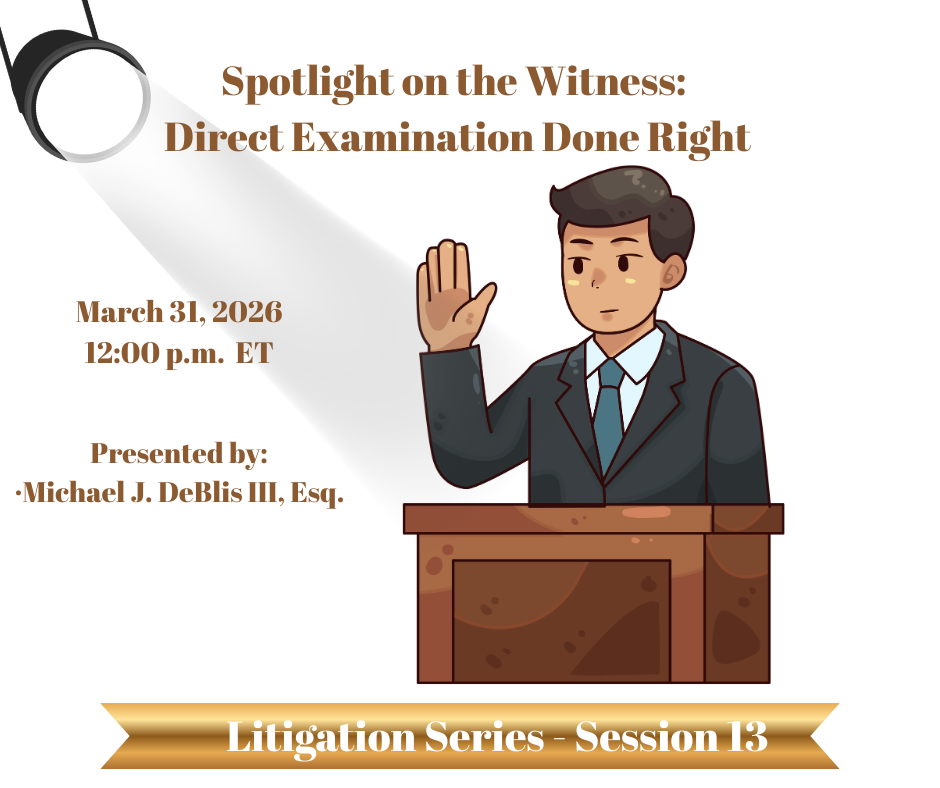
The direct examination presentation outlines how attorneys can elicit truthful, credible testimony w...

The False Claims Act continues to be the federal Government’s number one fraud fighting tool. ...

This presentation teaches attorneys how to deliver memorized text—especially openings and clos...